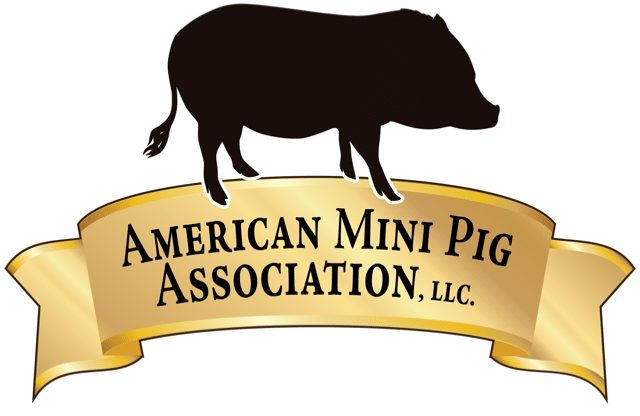Introducing the new
AMPA Therapy Pig Training & Certification Program
This self-paced program will lead you on the path to learning what is needed to begin using your mini pig as a therapy pet in your community. Therapy pets change lives as they visit nursing homes, retirement communities, schools, libraries, and more. Using a mini pig as a therapy animal not only makes a lasting impact on the humans he meets, but it gives the opportunity to educate on the truths of mini pig pet ownership. You and your pig will be ambassadors for the mini pig community while you spread some smiles, laughs, and love to those who may be needing it.
Included in the program is an online educational course that will need to be completed by you, the owner/handler on basic mini pig care and health, educational information about mini pigs to share on your visits, important information on understanding pig behaviors, and essential tools to help you train your pig in preparation for certification.
Your mini pig will begin the training process, if he/she has not already mastered the required skills. You will have all the support you need from the AMPA team to get those skills perfected. We will require video submissions of the required skills once you and your mini pig have mastered them. If your mini pig has already been training and working in the community, you and your pig will be ready to jump right in for certification testing.
Preparing to Volunteer
Once you have acclimated your pig to getting around in public, you may want to begin offering visits to local businesses, organizations, or planned events. Set yourself and your pig up for success with proper preparations. The needs of your pig should always come first. These visits should be tailored to the needs of your pig and revolve around keeping him comfortable and relaxed. If the pig isn’t comfortable, he can’t provide the therapy intended! Start your visits with only one pig at a time. You want to give your pig your full, undivided attention during these visits. Once your pig is more experienced, you may choose to take pig-siblings on visits together.
Consider the following before scheduling your first therapy visit.
If your pig is young, give them plenty of time to bond with the family at home. Learn his or her quirks and special needs. No two pigs are the same, tailor your visits to the needs of your pig. When possible, make sure your pig is spayed or neutered before starting therapy visits. The hormones of intact pigs can make them moody and unpredictable!
A rabies vaccination is recommended by many veterinarians for liability to protect your pig in case a person is bit or scratched. Discuss the pros and cons with your own veterinarian as well as any other vaccinations or health protocols. Keep your pig on a regular deworming schedule of both ivermectin and fenbendazole for internal and external parasite protection. Never take a sick pig to a public place. Some illnesses may be contagious to people and stress can worsen your pig’s illness.
Basic training before therapy visits should consist of learning their name, excellent recall, solid leash & harness training, allowing strangers to approach for petting, taking treats gently, and sit. More advanced training is highly desirable and will make your visits even better. However, many therapy animal handlers start visiting in the more controlled environments to strengthen their pig’s skills.
A retirement home is an ideal choice for a first therapy visit. They are typically a quiet setting, without too much foot traffic, loud crowds, or sudden movements. The employees and residents tend to be reserved and gentle. The environment is a great place to give your pig one on one interactions with the residents, and to coach the residents on proper handling before they interact with your pig. A bad experience for your pig could have long lasting effects. No matter how confident you are, take it slow and easy!
Finding Places to Volunteer
Once your pig is ready to volunteer, you may choose to contact facilities or places you are interested in visiting. Prepare any letters of recommendation, training certificates, and vaccination records as appropriate. Remember to start slow! Your first visit will be a learning experience for you both. Keep your options open and figure out what works for you and your pig.
If you have friends or relatives that work at a school, library, nursing home, or other place where a therapy pig would be welcome, reach out to them first. Ask if they are interested in a quick visit by a therapy pig. Try to schedule this for a time that is best for you and your pig. You don’t want to be in a rush to get there, or to get done, if you have other obligations. Your pig will sense your urgency or anxiety and will reflect that in his own behavior. You also don’t want a time when your pig is hungry, expecting food, or overly tired. Consider your pig’s daily routine and what time would work best for him.
Once you have worked through your first therapy visit, you will probably have gained new insight on the direction you would like to take moving forward. You may want more structured visits or less structure, more hands-on interaction or more of an audience. Feel free to choose what is right for you! Success depends on everyone enjoying themselves.
As you continue visiting places with your mini pig, word will spread fast, and you may even have contacts reach out to you requesting a visit! It’s a great idea to document your experienced with a public Facebook or Instagram page specifically for your Therapy Pig. Post photos, videos, and stories of the impact you are making on lives in your community.
Learn more about mini pigs at



